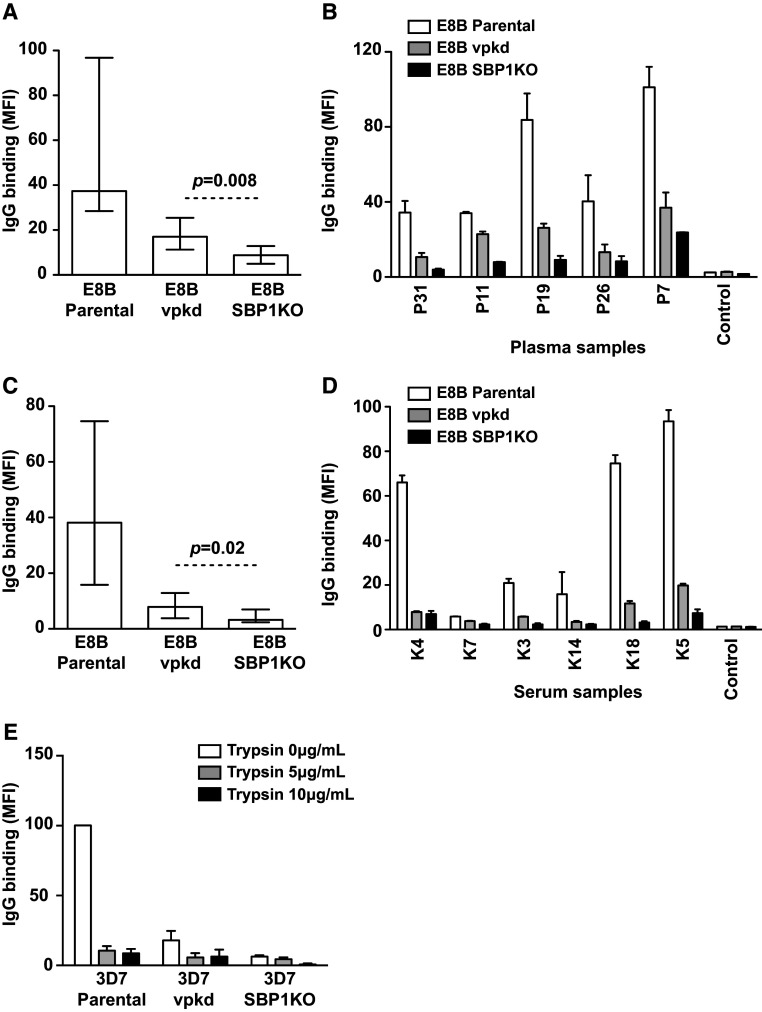Fig. 8.
PfEMP1 is the major target of human antibodies. The overall IgG binding to E8B SBP1KO parasites was markedly reduced compared to E8B parental parasites and further reduced compared to E8Bvpkd, among samples from PNG (a) and Kenya (c). Assays were performed twice independently; bars represent median and interquartile ranges (n = 12 for PNG, n = 7 for Kenya); p value was calculated using a paired Wilcoxon signed rank test; IgG binding levels are expressed as geometric mean fluorescence intensity (MFI) for all graphs. A representative selection of samples tested in parallel for antibodies to E8B parental, E8Bvpkd and E8B SBP1KO. Samples were from malaria-exposed PNG adults (b; P7–P31), Kenyan adults (d; K3–K18) and non-exposed Melbourne residents (Control). There was minimal background reactivity observed among sera from Melbourne residents. Assays were performed twice independently; bars represent mean and range of samples tested in duplicate. e IgG binding to the IE surface of 3D7 parental and 3D7vpkd was trypsin sensitive compared to 3D7 SBP1KO. IEs were incubated with trypsin at 5 or 10 ug/ml, or without trypsin, and tested for IgG reactivity among samples form Kenyan adults. IgG binding levels are expressed as a percentage of their respective 3D7 parental reactivity without trypsin; bars represent mean and SEM of samples tested in duplicate (n = 5) after subtraction with IgG levels from negative Melbourne controls

